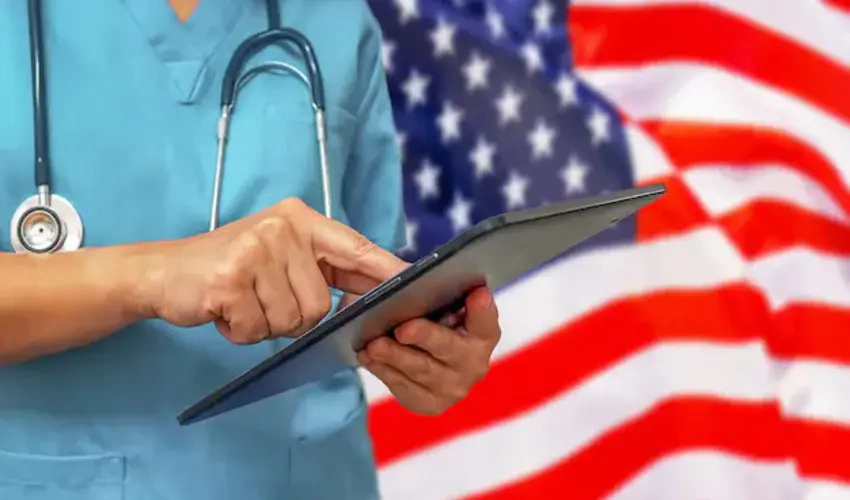Healthcare benefits Verification USA is a procedure that decides if a patient is eligible for some terms and conditions and authenticates the details of patients before patient visits. The patient information is entered and assessed authenticating certain criteria and age limits like claim address, phone number, and insurance name.
Introduction
The healthcare industry is undergoing a significant transformation driven by technological advancements and changing consumer expectations. Staying ahead of the curve is crucial for efficient and secure operations. Emerging trends and innovations in benefits verification are redesigning the way healthcare companies manage data, interact with clients, and ensure the integrity of their service. This post explores four innovations shaping the future of insurance eligibility checks – blockchain, remote insurance verification, machine learning (ML) predictive analysis, and green protocols.
This article looks at some innovations shaping the future of healthcare benefits verification such as predictive analytics, machine learning (ML), remote insurance verification, and blockchain.
Predictive Analysis With Machine Learning
Benefits verification plays an imperative role in evaluating risk, combating fraud, and determining policy eligibility. Nevertheless, the previous manual review and documentation analysis can be prone to errors and time-consuming. To overcome these issues, healthcare companies can incorporate machine-learning methods to streamline and automate process verification. By using AL algorithms and reviewing huge data quantities of historical information, healthcare service providers can forecast the probability of insurance claims, pinpoint possible frauds, and create efficient procedures. These algorithms allow companies to make informed decisions and adopt proactive measures to eliminate these risks. For example, by adopting predictive analysis based on machine learning, companies can predict the risks connected with providing health insurance to individuals, permitting accurate pricing based on past behavior and eligibility patterns. Relying on predictive analysis with machine learning enhances the efficiency of insurance verification and contributes to accurate pricing and underwriting strategies.
Remote Healthcare Benefits Verification and Telehealth Services
The increased consumption of telehealth services has changed the way healthcare benefits verification is done. Insurers and benefits verification companies now depend on telehealth platforms that are connected with benefits verification mechanisms to remotely authorize patient coverage due to telehealth appointments. Amalgamating remote verification and telemedicine services eliminates geographic hurdles. This makes it possible for patients in underserved and remote areas to attain superior care quality. Patients are no longer able to physically visit doctors’ offices and submit paper documents due to insurance verification. The healthcare benefits verification procedure sometimes occurs in real-time. This allows quicker approval for telemedicine services and offers faster feedback to both healthcare companies and patients. This innovation enhances efficiency and meets the expanding demand for convenient and accessible healthcare services.
Blockchain
Blockchain has changed the security of benefits verification data. By incorporating cryptographic methods, it guarantees the integrity and accuracy of data to minimize fraud. Once data is stored in a block, it cannot be modified or deleted without identification, decreasing the risk associated with unauthorized modifications. Blockchain’s traceability and transparency features offer a clear audit trail for benefits verification transactions. In addition, smart contracts improve the procedure by automating tasks like claims processing, policy validation, and identity verifications. This automation guarantees that all parties have access to tamper-proof and immediate data, enhancing integrity. It eases the workflow for clients and insurers, making the complete process very efficient.
Embracing Innovation for Efficiency and Success In Healthcare Benefits Verification
The health insurance industry is looking at a transformative move in the way healthcare benefits verification is done. Blockchain technology guarantees telehealth services, secure data management allows remote authentication, predictive analysis with machine learning maximizes the procedure, and sustainability practices endorse health insurance verification. Keeping up with emerging trends is important for insurers wanting to enhance efficiency, stay competitive, and offer improved customer experience.
Frequently Asked Questions (FAQs)
What is healthcare benefits verification?
Healthcare benefits Verification USA is a procedure that decides if a patient is eligible for some terms and conditions and authenticates the details of patients before patient visits. The patient information is entered and assessed authenticating certain criteria and age limits like claim address, phone number, and insurance name.
What is the biggest trend dominating the healthcare industry?
Blockchain has changed the security of benefits verification data. By incorporating cryptographic methods, it guarantees the integrity and accuracy of data to minimize fraud. Once data is stored in a block, it cannot be modified or deleted without identification, decreasing the risk associated with unauthorized modifications. Blockchain’s traceability and transparency features offer a clear audit trail for benefits verification transactions. In addition, smart contracts improve the procedure by automating tasks like claims processing, policy validation, and identity verifications. This automation guarantees that all parties have access to tamper-proof and immediate data, enhancing integrity. It eases the workflow for clients and insurers, making the complete process very efficient.

